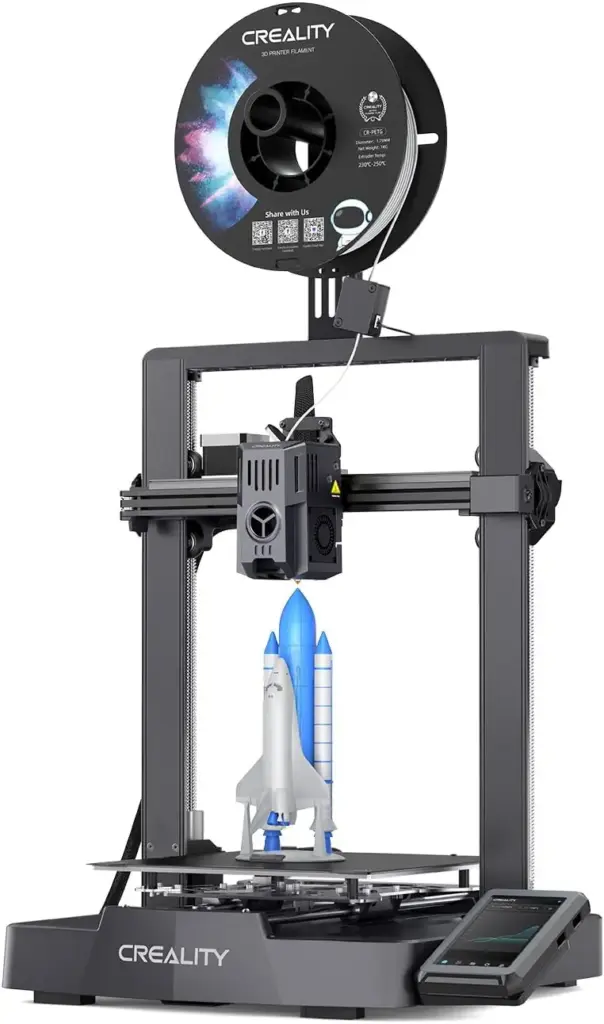Getting Started with 3D Printing
- Last Updated March 5, 2025
- Originally Posted
Overview
3D Printing is one of my all time favorite hobbies as the possibilities are truly endless. For those that have never used a 3D printer the process can be a bit intimating but not to worry as I’ll walk you through step by step and I’m confident I can get you up and running even if you’re not tech savvy.
Types of 3D Printers
You should be aware that 3D printing has actually been around for quite awhile and there are many different types of 3D printers. Some machines use a vat of liquid resin combined with light to form objects while some industrial machines use metal powders and high power lasers. The type of 3D printer that’s best for beginners and that’s budget friendly is what’s know as FDM or (Fused Deposition Modeling). FDM printing is simply a spool of plastic that is squeezed out of a hot nozzle just like a hot glue gun.
How 3D Printing Works
It’s important to know how 3D printers work so that you can also understand their limitations. Every 3D printer on the market builds their parts by creating one layer at a time. An easy visualization would be how a hamburger is created with a base bun, then a patty, then a layer of cheese, and so on until the hamburger is complete. 3D printed parts are also built one layer at a time but the layers are extremely thin.
First Printer Recommendations
Their are so many options these days that is can be overwhelming as a beginner to find a 3D printer. One of the key items that needs to be setup properly is the distance or gap between the base printing bed and the printing nozzle. This can be tricky as a beginner so I highly recommend purchasing a machine that has “auto leveling”. Additionally there’s no sense in speding a ton of money on a first time machine before you find out if it’s something you actually enjoy. I would recommend a machine between $200-$300 as a first time machine.
My top recommendation right now is the Creality Ender3 V3 KE which goes for $300 and has Wifi capability for remote printing and is high speed. You can also get the standard model that prints a bit slower and doesn’t have Wifi for $220 if you’re looking for something a it cheaper.

Getting 3D Designs
No need to learn 3D design as there are literally thousands of free 3D print designs available from various sites. Most designs are free but some places offer highly soft after designs like movies props which tend to charge a fee to download them. Whatever you pick if it’s your very first time printing something I recommend choosing something fairly small and simple in shape.
Below are links to popular and reputable 3D design sites. (Thingiverse is my personal favorite.)
Preparing Your First Print
Earlier when we talked about how 3D printers work we talked about how they build things in layers. Once we find a design we want to print we first have to process the 3D model in what’s know as a “Slicer”. A slicer is a program that takes a 3D design and slices it up into the individual layers so that the machine understands how to build the part.
If you’re just starting out I would recommend a free slicer such as PrusaSlicer as it’s very popular among the 3D printing community. My personal favorite slicer is Simplify3D but it does come with a hefty price tag of $199 which is the same cost of some 3D printers!
Your First Print
Once you’ve processed your 3D design file with your slicer you’ll have a new file ending in .gcode. You’ll simply copy this file to a USB flash drive and plug in into your machine or if your printer supports Wifi you can send and start the print remotely.
Congrats on your first print! And remember that if it doesn’t come out perfect that it’s okay as the first few prints are going to be a learning process. And if you do print something and post it online, please tag me as I’d love to see and hear about how it went!
Happy Printing!
Troubleshooting (If Needed)
Sometimes 3D printers can do weird things that seem unexplained but there is always a reason behind the behavior. The Simplify3D website has one of the best resources I’ve seen dedicated to printing troubleshooting. If you have any issues I highly recommend checking their page out. Additionally you can also join my Discord server and post in the 3D printing channel. I’ve printed hundreds of parts over the years and I’m happy to help or answer any questions you might have.
